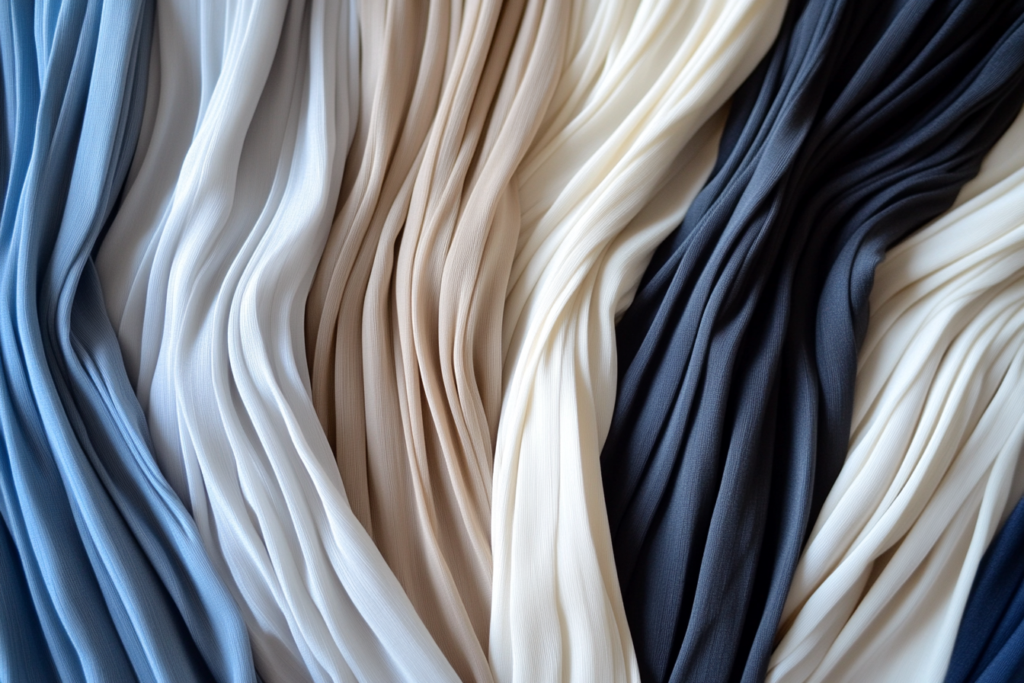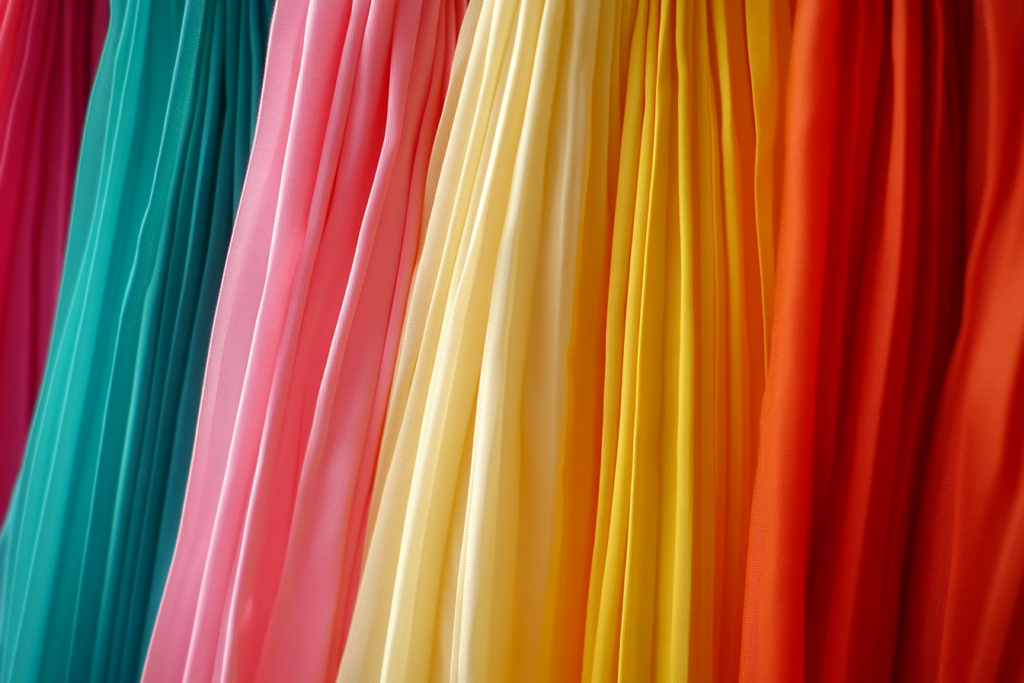Pleats: A Classic Fabric Folding Technique for Texture & Movement
Meta Description: Pleats are fabric folds fixed at one end and left loose at the other, creating structured or flowing designs. Learn about different pleat styles, uses, and styling tips.
What Are Pleats?
Pleats refer to various styles of fabric folds that are fixed at one end by ironing, sewing, or seaming, while the other end remains loose to create volume, texture, and movement. Pleating is a decorative and functional technique used in fashion, upholstery, and textiles to add structure, elegance, and fluidity to garments.
Pleats are commonly found in skirts, dresses, trousers, and blouses, as well as uniforms and high-fashion couture.


Key Features of Pleats
✔ Created by Folding Fabric in Half – Then fixed by heat, stitching, or tacking.
✔ Adds Volume, Texture & Movement – Can be structured or flowy, depending on the type.
✔ Common in Skirts, Dresses & Trousers – Found in casual, formal, and couture designs.
✔ Can Be Pressed or Permanent – Some pleats are heat-set for a long-lasting effect.
✔ Variety of Styles & Techniques – Includes box pleats, knife pleats, accordion pleats, and more.
Where Are Pleats Used in Fashion?
📌 Skirts & Dresses – Creates movement, structure, or a fitted-to-flared effect.
📌 Trousers & Pants – Adds shape to the waistline and comfort to the fit.
📌 Blouses & Outerwear – Provides decorative details and fabric flexibility.
📌 Uniforms & Traditional Attire – Used in school uniforms, kilts, and cultural garments.
📌 Couture & Runway Fashion – Features exaggerated, sculptural pleating techniques.
Types of Pleats
1. Knife Pleats
- All pleats fold in the same direction.
- Creates a sleek, structured appearance.
- Common in school uniforms, skirts, and trousers.
2. Box Pleats
- Two fabric folds face away from each other, forming a box shape.
- Adds volume and a structured silhouette.
- Found in skirts, kilts, and jackets.
3. Inverted Pleats
- The opposite of box pleats; folds face inward toward the center seam.
- Gives a smooth front with hidden fullness underneath.
- Seen in dresses and A-line skirts.
4. Accordion Pleats
- Uniform pleats that alternate in sharp folds, creating a zigzag effect.
- Offers fluidity and dramatic movement.
- Used in skirts, dresses, and wide-leg pants.
5. Sunburst (Crystal) Pleats
- Pleats start narrow at the waist and widen toward the hem.
- Creates a flared, flowing silhouette.
- Ideal for evening gowns and feminine skirts.
6. Cartridge Pleats
- Tightly gathered pleats that create dramatic volume.
- Used in historical and costume fashion.
7. Pintuck Pleats
- Very narrow, stitched-down pleats for delicate detailing.
- Found in blouses, shirts, and fine tailoring.
💡 Tip: Knife pleats provide structure, while accordion pleats add flow and movement.
Pleats vs. Other Fabric Manipulation Techniques
| Feature | Pleats | Darts | Gathers | Ruching |
|---|---|---|---|---|
| Technique | Fabric folded in a structured pattern | Small tucks to shape garments | Fabric is loosely gathered for volume | Fabric is scrunched or layered |
| Appearance | Structured, uniform folds | Smooth, fitted contour | Soft, voluminous effect | Textured, ruched look |
| Best For | Skirts, dresses, pants | Bust and waist shaping | Flowy dresses, ruffles | Stretchy or bodycon garments |
💡 Tip: Pleats offer structure, while gathers and ruching create a softer, textured effect.
How to Style Pleated Clothing
👗 For a Classic Look → Pair a pleated midi skirt with a fitted blouse and heels.
👖 For a Chic Work Outfit → Wear pleated trousers with a tailored blazer and loafers.
👚 For a Feminine Touch → Choose a pleated dress with soft draping and ballet flats.
👠 For an Edgy Street Style → Combine a leather pleated skirt with ankle boots and a crop top.
🎭 For a Dramatic Runway Look → Opt for oversized accordion pleats in bold, structured designs.
💡 Tip: Pleats work well in flowy fabrics like chiffon for movement or structured fabrics like wool for tailored looks.
Why Choose Pleats?
✔ Adds Volume & Dimension – Creates elegance, structure, or fluidity in garments.
✔ Timeless & Versatile – Works in classic, modern, and avant-garde fashion.
✔ Can Be Dressy or Casual – Seen in formal gowns, business attire, and everyday wear.
✔ Flatters Different Body Types – Can create a slimming effect or add shape where needed.
✔ Enhances Fabric Movement – Especially in lightweight or flowy materials.
Conclusion: The Elegance & Functionality of Pleats
Pleats are a fundamental design element in fashion, offering structure, elegance, and movement to garments. Whether used in skirts, trousers, or couture gowns, pleats remain a timeless and versatile styling choice that enhances both casual and high-fashion aesthetics.
For those who love tailored details or flowing silhouettes, pleats add the perfect balance of form and function to any wardrobe.



